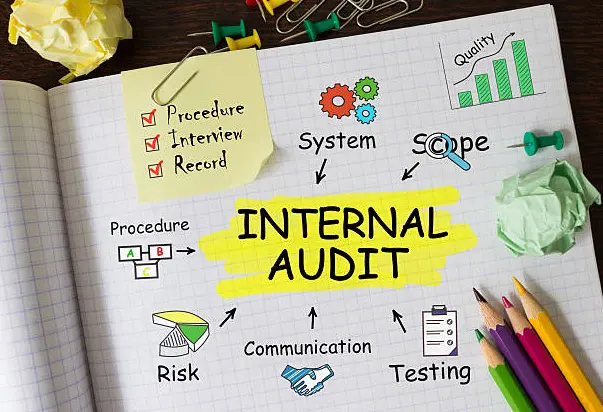ISO 27001:2022 Clause 9.2.2
Explaining ISO 27001 2022 Clause 9.2.2 Internal Audit Programme
Clause 9.2.2 of ISO 27001 focuses on the creation and maintenance of an internal audit programme. It provides guidelines for planning, implementing, and documenting audits to ensure your ISMS remains compliant and effective. This includes setting audit frequency, defining criteria and scope, ensuring auditor objectivity, and reporting results to management.

Objective of Clause 9.2.2
The primary objective of Clause 9.2.2 is to establish a structured, repeatable, and effective internal audit programme that helps organizations identify non-conformities, risks, and areas for improvement in their ISMS. This contributes to overall compliance and ensures information security objectives are met.
Purpose of Clause 9.2.2
The purpose of this clause is to:
- Ensure regular internal audits are conducted to assess ISMS performance.
- Maintain objectivity and impartiality in audits by selecting independent auditors.
- Use audit results to identify weaknesses and improve ISMS effectiveness.
- Provide documented evidence of audit findings for compliance and certification purposes.
Requirements of an Internal Audit Programme
Clause 9.2.2 specifies several key requirements that your organization must implement to establish an effective internal audit programme. These include audit planning, defining scope and criteria, selecting auditors, reporting findings, and maintaining audit records.
Establishing and Planning the Internal Audit Programme
An internal audit programme must be carefully planned and structured to be effective. Key considerations include:
- Audit Frequency:
Audits should be conducted at regular intervals based on risk assessments.
High-risk areas may require more frequent audits than low-risk processes. - Audit Methods:
Internal audits can be performed using a combination of:- Document reviews (e.g., policies, procedures, risk assessments).
- Interviews with staff responsible for security processes.
- Technical testing of security controls.
- Observations of operational procedures in practice.
- Audit Responsibilities:
Clearly define roles and responsibilities for internal audit teams.
Ensure that audits are assigned to qualified personnel with the appropriate expertise. - Integration with ISMS Governance:
Align the audit programme with the overall risk management and compliance strategy.
Ensure audit planning considers previous audit findings, emerging threats, and regulatory changes.
Defining Audit Scope and Criteria
Each internal audit must have a well-defined scope and criteria to ensure that assessments remain focused and relevant.
Audit Scope:
Identify which departments, processes, and systems will be audited.
Determine whether audits will focus on specific ISO 27001 controls or a broader security framework.Audit Criteria:
Define compliance benchmarks, such as:- ISO 27001 requirements
- Internal security policies
- Legal and contractual obligations
- Establish clear evaluation metrics for assessing security controls.
Selecting Auditors and Ensuring Objectivity
Internal audits should be conducted by personnel who are:
- Independent of the processes being audited to ensure impartiality.
- Trained and competent in ISO 27001 audits and information security best practices.
- Familiar with your organization’s security framework and risk environment.
Organizations may choose to use:
- Internal audit teams (if they possess the necessary expertise and independence).
- Third-party audit firms to provide an objective, external perspective.
Conducting Internal Audits
A standard audit process should follow these steps:
Pre-Audit Planning
Define audit objectives, scope, and criteria.
Notify relevant teams about audit schedules and expectations.Execution
Conduct document reviews, interviews, and security tests.
Gather objective evidence to support audit findings.Reporting
Document audit findings in a structured format.
Highlight non-conformities, risks, and recommended corrective actions.Corrective Actions
Assign responsibilities and timelines for addressing identified issues.
Track remediation efforts to ensure effectiveness.Follow-Up Audits
Verify that corrective actions have been implemented successfully.
Maintaining Documented Audit Records
Clause 9.2.2 requires organizations to keep detailed documentation of:
- Audit schedules and plans.
- Audit reports with findings and recommendations.
- Records of corrective actions and follow-ups.
In the world of ISO 27001, if it’s not documented, it didn’t happen. Clause 9.2.2 underscores the importance of maintaining detailed documentation for all aspects of your internal audit programme. These records serve as proof of compliance.
Why Documentation is Important
Demonstrating Compliance
External auditors or certification bodies will require evidence that your internal audits are conducted thoroughly and consistently. Proper documentation provides the proof needed to show:- Your ISMS is being evaluated against ISO 27001 standards.
- You’re taking action to address findings and improve processes.
Driving Continuous Improvement
Records of audit findings, corrective actions, and follow-ups help identify recurring issues and track progress over time. This ensures your ISMS evolves to meet new challenges and risks.Supporting Accountability
Clear documentation ensures that responsibilities are assigned, actions are tracked, and nothing falls through the cracks.
What to Include in Documented Evidence
Your internal audit programme documentation should cover the entire audit lifecycle, from planning to implementation to results.
| Document Type | Purpose | Examples |
|---|---|---|
| Audit Plan | Outlines the criteria, scope, objectives, and schedule for the audit. | – Processes to be audited – Audit objectives – Criteria (e.g., ISO 27001 clauses, internal policies) |
| Audit Implementation | Tracks how the audit was conducted and the methods used. | – Interview notes – Process observations – Testing results |
| Audit Findings | Captures the results of the audit, including areas of compliance and non-conformity. | – List of non-conformities – Risk levels associated with findings |
| Corrective Actions | Documents the steps taken to resolve identified issues. | – Action plans – Deadlines and responsible parties |
| Follow-Up Reports | Verifies that corrective actions were implemented successfully. | – Status updates – Evidence of resolution |
Tips for Effective Documentation
Use Templates and Tools
Leverage pre-built templates for audit plans, findings, and reports. Consider using ISMS tools or software to automate documentation and ensure consistency.Be Clear and Concise
Avoid excessive jargon. Documentation should be easy to understand for both technical and non-technical stakeholders.Store Records Securely
Maintain audit records in a secure but accessible location. Ensure only authorized personnel can access sensitive audit data.Keep Documentation Current
Regularly update documentation to reflect the latest audit results, corrective actions, and changes to your ISMS.
Tip: Review documentation annually to ensure it aligns with ISO 27001 updates and organizational changes.
Relationship with Other ISO 27001 Clauses and Controls
Clause 9.2.2 is linked to several other ISO 27001 requirements:
- Clause 9.2.1 (Internal Audit Requirements) – General requirements for conducting internal audits.
- Clause 9.3 (Management Review) – Ensures audit results inform strategic decision-making.
- Clause 10.1 (Nonconformity and Corrective Actions) – Addresses security gaps identified in audits.
- Control 5.35 (Independent Review of Information Security) – Provides additional oversight for audits.
Templates That Assist with Clause 9.2.2
To implement an internal audit programme effectively, your organization can use pre-built templates from Cyberzoni.com:
- ISO 27001 Internal Audit Checklist Template – Helps structure and execute audits.
- ISO 27001 Audit Plan Template – Defines audit scope, frequency, and responsibilities.
- ISO 27001 Nonconformity and Corrective Action Template Internal Audit Checklist(Included in the ) – Tracks audit findings and resolutions.
- ISO 27001 Management Review Template – Documents management review of audit results.
Summary
Clause 9.2.2 of ISO 27001 lays the foundation for a systematic and reliable internal audit programme. A structured planning, clear criteria, impartiality, and thorough documentation, ensures that audits become tools for continuous improvement.
A well-executed audit programme helps your organization:
- Identify and address vulnerabilities before they escalate.
- Maintain alignment with ISO 27001 standards and internal policies.
- Enhance the effectiveness of your ISMS, building confidence with stakeholders.
Whether you’re preparing for certification or refining your current processes, Clause 9.2.2 provides the guidance needed to create an audit framework that drives measurable improvements in your organization.


